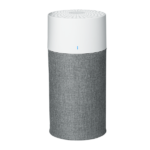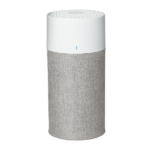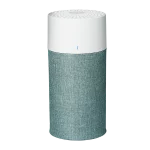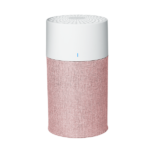Around 30 different types of pollen can cause hayfever in the UK. The type of pollen in the air will differ depending on the time of year, and you can be allergic to more than one type.
In this post we’ll introduce some of the most common types of pollen in the UK. We’ll also explore some ways you can find out what type of pollen you’re allergic to.
What is Pollen?
When we talk about pollen, we’re talking about tiny particles that plants and trees release as part of their reproductive cycle. It’s spread by insects and by the wind.
Different Types of Pollen
In the UK, the different types of pollen that can cause allergies are created by different types of plants and trees, including:
- Alder
- Ash
- Birch
- Hazel
- Oak
- Sycamore
- Willow
- Grasses
- Nettles
What Type of Pollen Am I Allergic To?
One way you can find out what type of pollen you’re allergic to is to keep records of your symptoms. What symptoms do you experience, and when do you experience them? When do you first start experiencing your symptoms, and when do they start going away?
This will help you determine which type of pollen you’re allergic to, because different plants and trees release their pollen at different times of year.
Pollen Types by Month
- January to March – Alder, ash, birch, hazel, yew, elm
- April to May – Oak, sycamore, oil seed rape.
- June to July – Willow, lime tree, grasses, mugwort.
- August to September – Plantain, nettles, sorrel, dock.
What Are Your Symptoms?
All hayfever sufferers tend to experience similar symptoms, including:
- Runny or blocked noses
- Coughing and sneezing
- Irritated eyes
- Shortness of breath
- Rashes and other skin irritations
People with asthma may experience more severe symptoms, and people with eczema may also be more susceptible.
Your specific symptoms are unlikely to help you determine just what type of pollen you’re allergic to. However, some types of pollen are more allergenic than others. So if your symptoms peak at a certain time of year, it might be due to a prevalence of a certain type of pollen. For example, oak produces moderate allergenicity, and the trees release their pollen in April and May.
Take a Pollen Test
You can by home pollen allergy test kits, which may help you determine what type of pollen is causing your allergies.
You can also find interactive quizzes online to narrow down what’s causing your allergies. But bear in mind that any quizzes on US sites will likely talk about plants and grasses that aren’t common in the UK.
How To Reduce Hayfever Symptoms
There are a few things you can do to manage hayfever symptoms:
- Keep an eye on the pollen count in the UK. Try and stay indoors on days with high pollen counts, and keep your windows closed so as not to allow pollen into your home.
- Wash your clothes and bedding regularly, but don’t dry it outside, or it could get covered in pollen.
- Talk to your doctor about treatments or ask about over the counter treatments in your chemist.
You can read our full guide to dealing with the symptoms of hayfever. Our guide also shares some tips for how you can sleep better when dealing with hayfever allergies.
Purify The Air In Your Home
One of the most effective ways to manage your symptoms during hayfever season is to remove all the pollen from your home’s atmosphere, allowing pure, clean air to circulate instead.
Our Home Air Purifier can remove up to 99% of particles from the air including dust, mould, pet dander, and pollen. They can achieve 4.8 air changes per hour in rooms of up to 17m², allowing you to breathe cleaner, purer air. This will help you manage your allergies even on days with high pollen counts.
Head here to learn more about how our home air purifiers can help you conquer your hayfever symptoms.
View our Range of Air Purifiers



